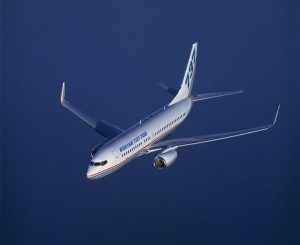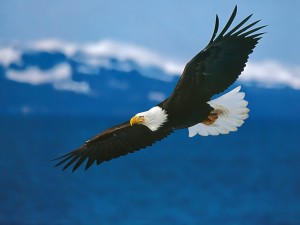
Wing-tip vortices visualized in the clouds
In class we covered how vortices are generated at the tips of wings. We learned that this is due to high pressure air from under the wing spilling over the wing tip and moving into the area of low pressure above the wing. This causes a large “tornado” of air to form off of the wing tip. This vortex is very dangerous as it can cause other planes to lose control, but less obviously it is a major source of drag for the plane creating it.
Relatively recently, aerospace engineers have begun to focus more and more on diminishing these vortices to a minimum both to increase safety, and also profit. If planes give off a smaller wing tip vortex then they can fly and land much closer together, minimizing costs. Possibly the most major benefit of a reduced wing tip vortex is the reduced drag which accompanies it; pilots can then use less fuel to go the same speed, increasing profit.

Blended winglet
The most broadly implemented solution to the wing tip vortex problem is to add a winglet to the end of the wing. A winglet is an extra length of wing turned upwards, or grafted perpendicularly onto the end of the wing. This prevents the high pressure air under the wing from spilling over into the low pressure zone on top, greatly reducing the vortex generated. The blended winglet is the most common form, it is simply a smooth curving up of the end of the wing. It has been found to increase the fuel efficiency of a Boeing 707 6.5%. No wonder many modern planes integrate them into their design!

Commercial jet with winglets
If the implementation of a blended winglet or other vortex mitigating device is so beneficial to the design of an airliner, one might wonder why birds or other flying animals seem to lack them. In reality, they don’t! Birds simply compensate for wingtip vortices in a slightly different manner. They have wingtip feathers with a small amount space in between them, and this acts the same as a winglet. The small spaces between the feathers allows a bird to minimize their wingtip vortex by aiding in the smooth escape of trapped air. Mother nature beat us to the punch, we just didn’t know where to look!

Nature's solution to tip vortices: tip feathers
Sources:
2 Comments
Lorena Barba posted on October 19, 2011 at 11:34 am
The tips of those feathers also look slightly curved up; I bet birds use more than one approach to control their tip vortices. Great post!
Shahil Patel posted on October 19, 2011 at 5:57 pm
I always wondered why the tips of wings were pointed upwards and NOW I KNOW!